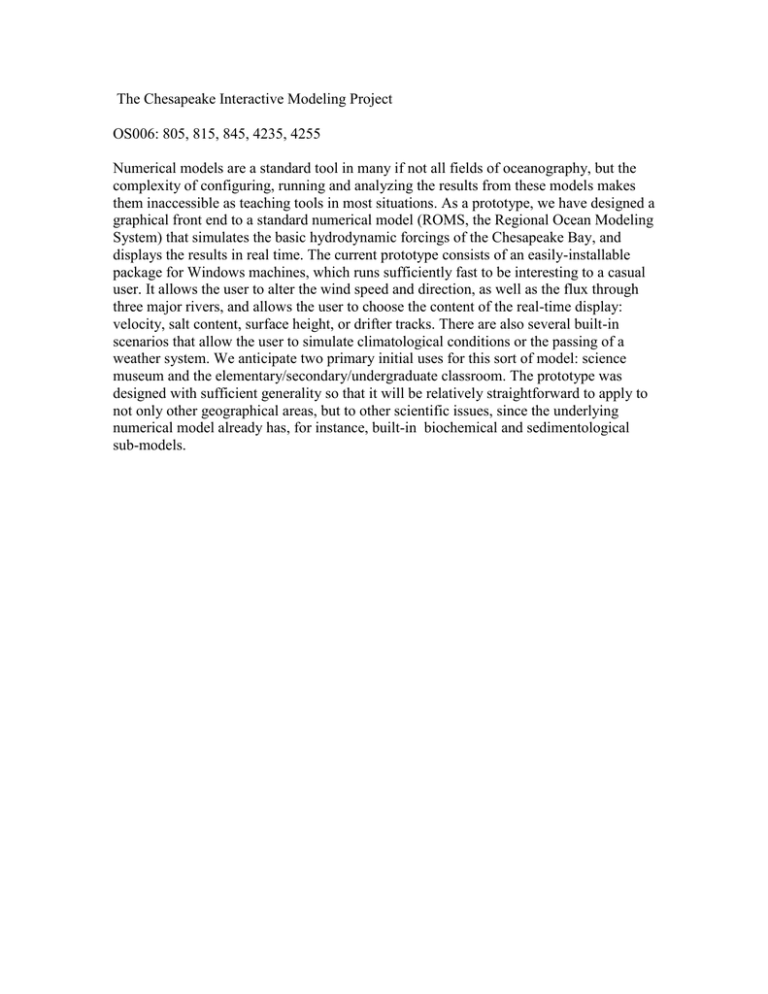The Chesapeake Interactive Modeling Project OS006: 805, 815, 845, 4235, 4255
advertisement

The Chesapeake Interactive Modeling Project OS006: 805, 815, 845, 4235, 4255 Numerical models are a standard tool in many if not all fields of oceanography, but the complexity of configuring, running and analyzing the results from these models makes them inaccessible as teaching tools in most situations. As a prototype, we have designed a graphical front end to a standard numerical model (ROMS, the Regional Ocean Modeling System) that simulates the basic hydrodynamic forcings of the Chesapeake Bay, and displays the results in real time. The current prototype consists of an easily-installable package for Windows machines, which runs sufficiently fast to be interesting to a casual user. It allows the user to alter the wind speed and direction, as well as the flux through three major rivers, and allows the user to choose the content of the real-time display: velocity, salt content, surface height, or drifter tracks. There are also several built-in scenarios that allow the user to simulate climatological conditions or the passing of a weather system. We anticipate two primary initial uses for this sort of model: science museum and the elementary/secondary/undergraduate classroom. The prototype was designed with sufficient generality so that it will be relatively straightforward to apply to not only other geographical areas, but to other scientific issues, since the underlying numerical model already has, for instance, built-in biochemical and sedimentological sub-models.
